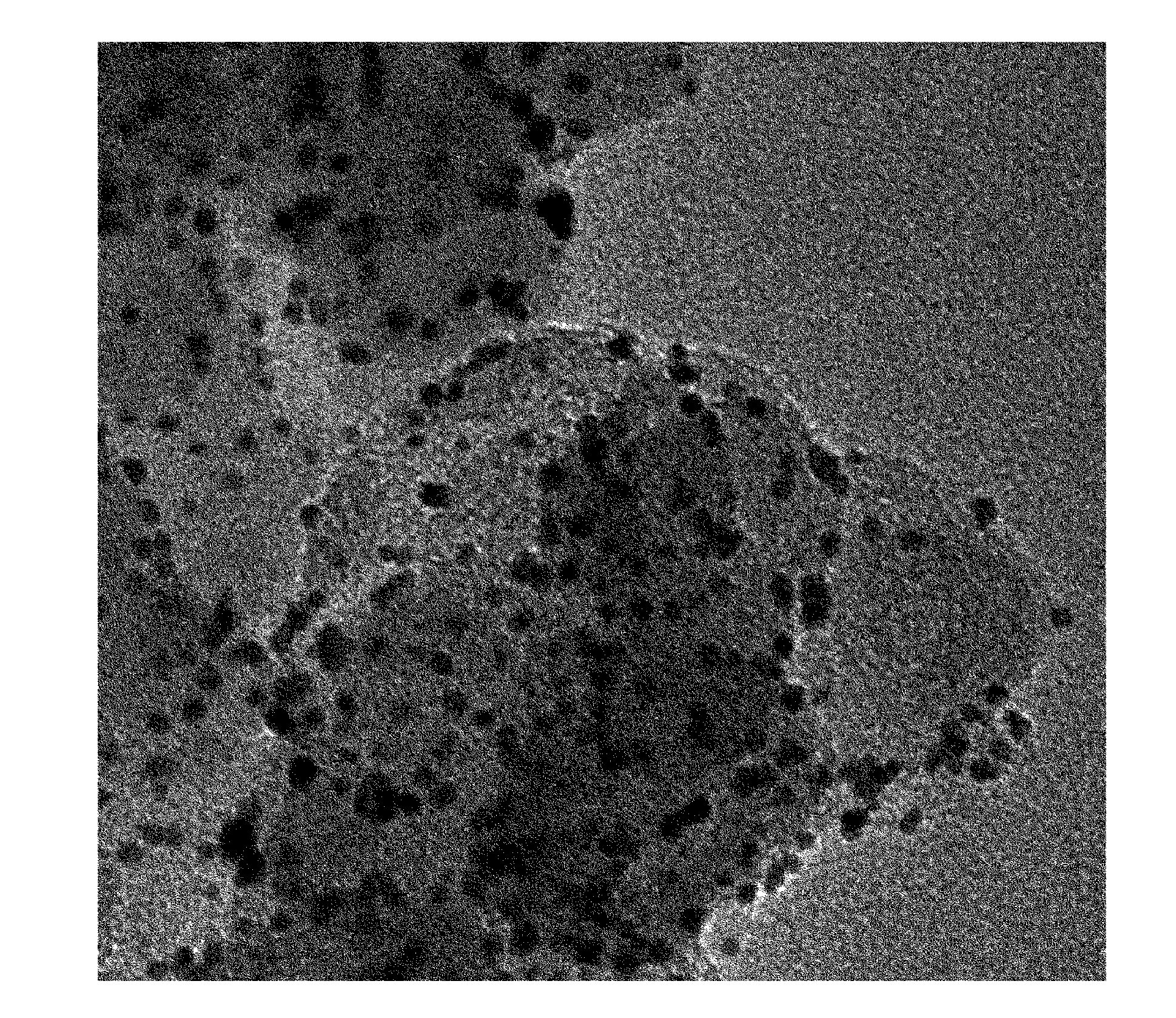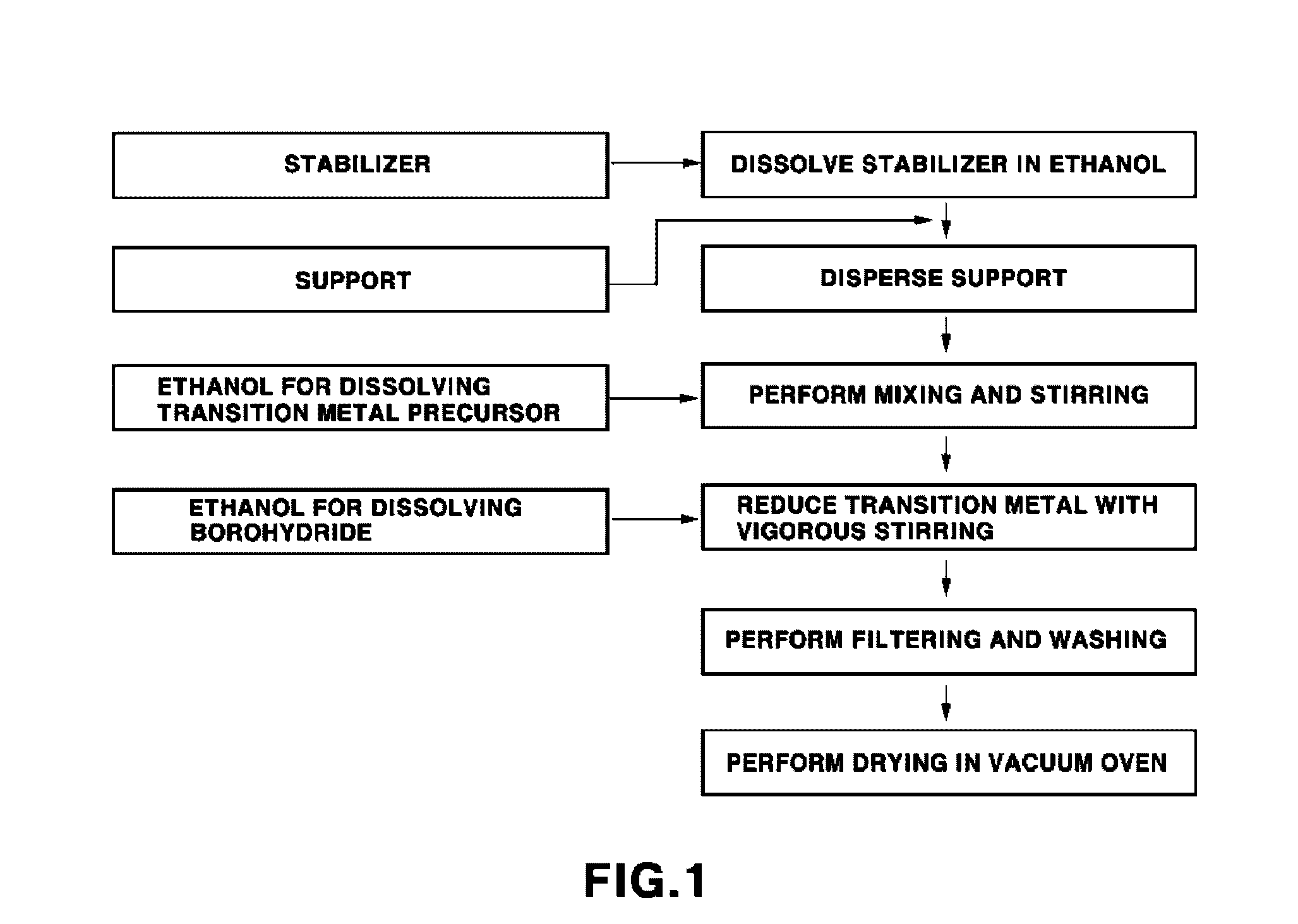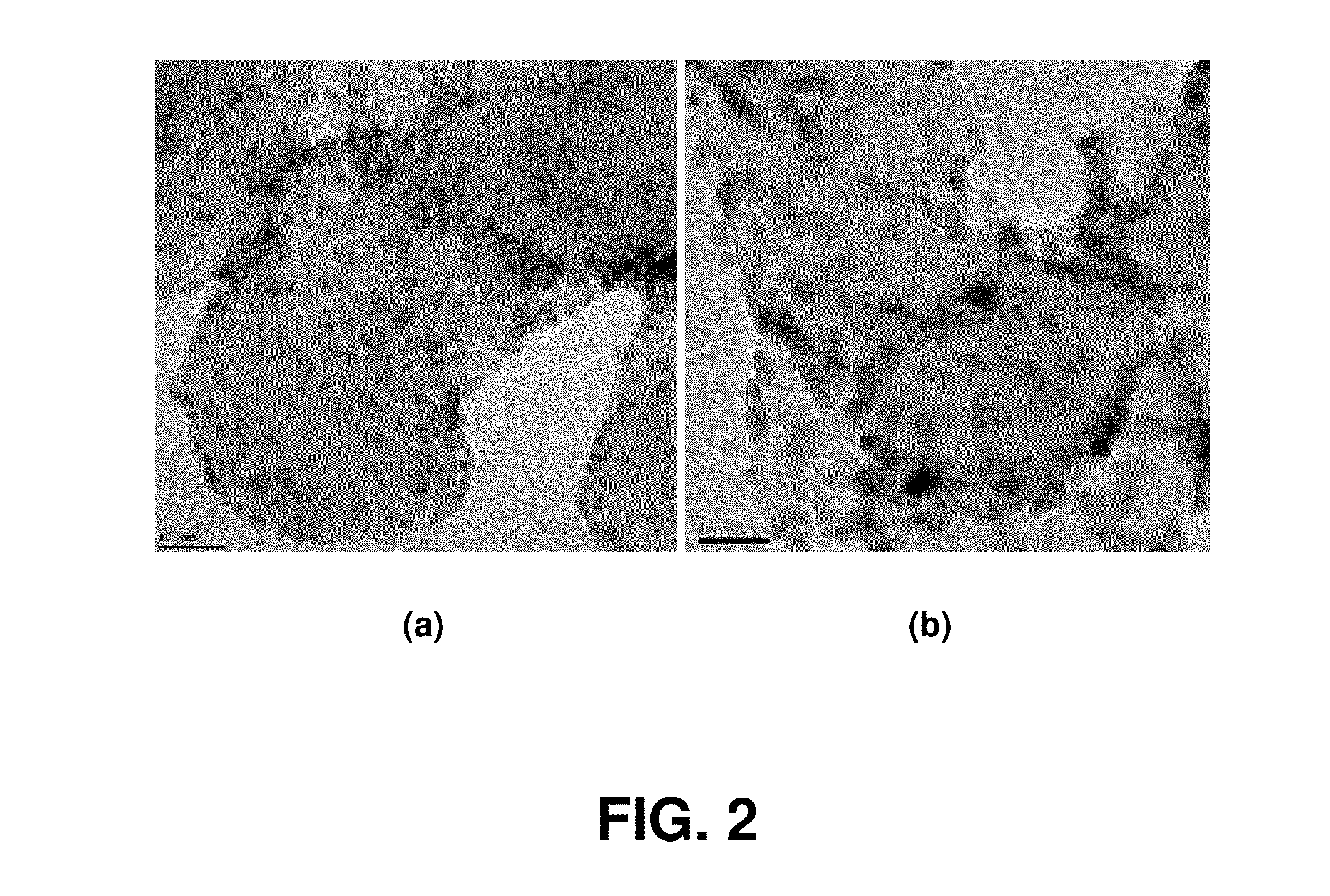Method of preparing nano-sized catalyst on carbon support
a technology of transition metal catalyst and carbon support, which is applied in the direction of metal/metal-oxide/metal-hydroxide catalyst, physical/chemical process catalyst, cell component, etc., can solve the problems of reducing and affecting the production efficiency of carbon suppor
- Summary
- Abstract
- Description
- Claims
- Application Information
AI Technical Summary
Benefits of technology
Problems solved by technology
Method used
Image
Examples
example 1
Synthesis of Nano-Sized 40 Wt % Ru / C Catalyst
[0038]A nano-sized ruthenium (Ru / C) catalyst containing 40 wt % metal was synthesized using the method according to the present invention, as described below.
[0039]80 μl of oleylamine (C18H35NH2, TCl) was added to 120 ml of anhydrous ethanol (water content of 1% or less), and then stirred for 30 min. Thereafter, 0.15 g of a carbon support (Cabot, Vulcan XC-72R) was added thereto, followed by performing stirring for 30 min, sonication for 30 min and then stirring for 30 min. Thereafter, 0.2498 g (0.15 g of carbon, 40 wt % supporting) of a ruthenium precursor (RuCl3.xH2O) was dissolved in 60 ml of anhydrous ethanol, added to the solution containing the carbon support with stirring, and then stirred for about 12 hours or longer. The solution thus obtained was finally reduced. To this end, 5 equivalents (about 5 times the mol of ruthenium) of sodium borohydride (NaBH4, about 0.19 g) was dissolved in 20 ml of anhydrous ethanol, and then added ...
example 2
Synthesis of Nano-Sized 40 Wt % Pd / C Catalyst
[0042]A nano-sized 40 wt % palladium (Pd / C) catalyst was synthesized using the same procedures as in Example 1. This synthesis process was the same as the preparation process of Ru / C, with the exceptions of the amount of the stabilizer and the kind of palladium precursor. The stabilizer was oleylamine, and the amount thereof was set to the same mol as that of the palladium. In the present embodiment, about 300 μl of the stabilizer was used. The palladium precursor was Pd(NO3)2 hydride, and sodium borohydride was used in an amount of about 0.18 g corresponding to 5 equivalents of palladium.
[0043]FIG. 4 is a TEM image of the nano-sized palladium catalyst prepared in Example 2. The nanoparticles has an average particle size of about 3.5 nm and show a superior particle distribution.
[0044]FIG. 5 is an X-ray diffraction pattern of the nano-sized palladium catalyst prepared in Example 2. The crystal peaks of palladium are definitely observed and...
example 3
Synthesis of Nano-Sized 40 Wt % Ir / C Catalyst
[0045]A nano-sized 40 wt % iridium (Ir / C) catalyst was synthesized using the same procedures as in Example 1. This synthesis process was the same as the preparation process of Ru / C, with the exceptions of the amount of the stabilizer and the kind of iridium precursor. The stabilizer was CTAB (C19H42BrN, TCl), and the amount thereof was set to about 0.095 g corresponding to 0.5 times the mol of iridium. The iridium precursor was IrCl3 hydride.
[0046]FIG. 6 is a TEM image of the nano-sized iridium catalyst prepared in Example 3. The iridium nanoparticles has an average particle size of about 2 nm and show a superior particle distribution. Despite the supporting of about 40% iridium based on the total weight of the catalyst including carbon, a superior particle distribution is shown.
[0047]FIG. 7 is an X-ray diffraction pattern of the nano-sized iridium catalyst prepared in Example 3. As is apparent from the drawing, the FWHM of the peak is ve...
PUM
| Property | Measurement | Unit |
|---|---|---|
| time | aaaaa | aaaaa |
| reduction potential | aaaaa | aaaaa |
| particle size | aaaaa | aaaaa |
Abstract
Description
Claims
Application Information
 Login to View More
Login to View More - R&D
- Intellectual Property
- Life Sciences
- Materials
- Tech Scout
- Unparalleled Data Quality
- Higher Quality Content
- 60% Fewer Hallucinations
Browse by: Latest US Patents, China's latest patents, Technical Efficacy Thesaurus, Application Domain, Technology Topic, Popular Technical Reports.
© 2025 PatSnap. All rights reserved.Legal|Privacy policy|Modern Slavery Act Transparency Statement|Sitemap|About US| Contact US: help@patsnap.com



